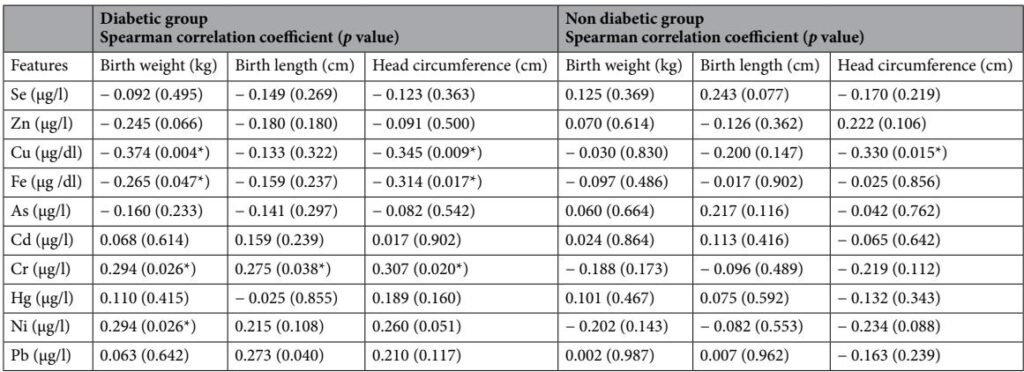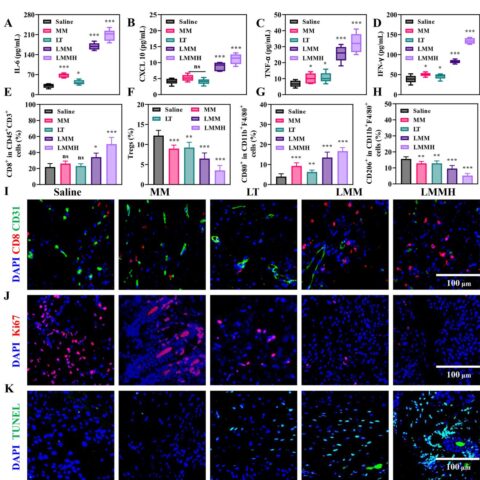Introduction
Intrauterine development is a critical and sensitive period during which the fetus is especially susceptible to external influences, including maternal trace element status. Trace elements, essential or toxic, participate in vital biochemical processes affecting enzymatic functions, antioxidant defenses, and fetal growth. Abnormal maternal concentrations of these elements can compromise pregnancy outcomes and neonatal development. Pregnant women with diabetes represent a unique population with altered metabolism and trace element homeostasis, potentially impacting fetal growth indicators like birth weight, length, and head circumference. This study aims to elucidate the association between maternal serum levels of both toxic and essential trace elements and neonatal anthropometric growth in diabetic versus non-diabetic pregnancies, addressing a clinically important gap in understanding how maternal micronutrient status influences fetal outcomes in metabolic disorders.
Study Design and Population
This observational case–control study enrolled 111 pregnant women from Kermanshah province, comprising 57 diabetic and 54 non-diabetic participants. Inclusion criteria for the diabetic group included a confirmed diabetes diagnosis, residency duration over five years, age between 18 and 45, and parity of three or fewer. Women with chronic comorbidities were excluded. Blood samples were collected prior to delivery at Motazedi and Imam Reza Hospitals, following informed consent and ethical approval (IR.KUMS.REC.1401.494). Demographic data, smoking status, and medical histories were recorded. Neonatal anthropometric measurements — weight, length, and head circumference — were obtained immediately post-birth using standardized equipment and protocols, ensuring data reliability and comparability between groups.
Trace Element Quantification
Maternal serum samples underwent digestion with nitric and perchloric acids before analysis by inductively coupled plasma mass spectrometry (ICP-MS), providing precise quantification of lead (Pb), cadmium (Cd), mercury (Hg), selenium (Se), zinc (Zn), chromium (Cr), nickel (Ni), copper (Cu), iron (Fe), and arsenic (As). The analytical procedures demonstrated high recovery rates (94–103%), ensuring measurement accuracy. This comprehensive panel includes both essential micronutrients critical for fetal development and toxic metals known for adverse health effects, permitting an integrative evaluation of maternal exposure and nutritional status relative to neonatal outcomes.
Key Findings
Although no statistically significant differences were found in average trace element serum concentrations between diabetic and non-diabetic mothers, nuanced associations emerged when examining neonatal growth parameters.
In the non-diabetic group, only copper concentration showed a significant inverse correlation with head circumference (r = -0.33, P = 0.015), suggesting that higher maternal Cu levels may slightly reduce this growth indicator.
Among diabetic mothers, more pronounced relationships were evident. Copper and iron exhibited significant negative correlations with neonatal birth weight and head circumference: Fe correlated with birth weight (r = -0.265, P = 0.047) and head circumference (r = -0.314, P = 0.017), while Cu correlated inversely with birth weight (r = -0.374, P = 0.004) and head circumference (r = -0.345, P = 0.009). Conversely, chromium levels showed positive correlations with infant weight, length, and head circumference (all P < 0.05), indicating a potential supportive role in growth.
Multivariate regression analyses, adjusting for maternal age and BMI, confirmed that elevated Cu levels significantly negatively affected infant weight and head circumference in the diabetic cohort (P < 0.01). Chromium concentration positively influenced birth length (P = 0.027). Importantly, exposure to cigarette smoke was associated with lower infant weight among diabetic mothers (P = 0.012), underscoring lifestyle factors' role alongside trace element status.
Additional findings revealed positive relationships between maternal BMI and neonatal weight in non-diabetic pregnancies, and maternal history of abortion was associated with increased infant length in both groups, suggesting complex maternal factors influencing growth.
Expert Commentary
These findings align with prior studies highlighting trace element imbalances’ impact on fetal growth, particularly the adverse effects of elevated copper in diabetic pregnancies – a population already at risk due to oxidative stress and metabolic disturbances. Copper’s dual role as an essential nutrient and potential pro-oxidant might explain its complex influence, where excess may impair fetal growth possibly through oxidative mechanisms or impaired placental function. The positive association of chromium with neonatal anthropometry is noteworthy, consistent with chromium’s role in enhancing insulin sensitivity, thus potentially improving nutrient transport across the placenta.
The lack of significant differences in overall trace element levels between diabetic and non-diabetic mothers may result from sample size limitations or compensatory mechanisms in diabetic pregnancies. However, the correlation analyses reveal important subclinical effects that bear on neonatal outcomes.
Smoke exposure’s detrimental effect further compounds risks in diabetic mothers, reinforcing public health messages on smoking cessation during pregnancy. The study also underlines the need for precise monitoring of trace elements to optimize maternal nutrition, particularly in complicated pregnancies.
This study’s limitations include the relatively small cohort size, cross-sectional design precluding causal inference, and absence of dietary intake data that could influence serum trace element status. Future longitudinal and interventional studies are warranted to unravel mechanistic pathways and develop targeted nutritional strategies.
Conclusion
Maternal serum trace elements, especially copper and chromium, display significant associations with birth anthropometrics in diabetic pregnancies, with increased copper levels linked to reduced birth weight and head circumference, and chromium correlating positively with birth length. The observed adverse influence of smoking on infant weight highlights the multifactorial determinants of neonatal growth. These insights emphasize the importance of closely monitoring and managing trace element imbalances and lifestyle factors in pregnant women with diabetes to enhance fetal growth and development outcomes. Further research is essential to define causality and inform clinical guidelines for micronutrient supplementation and environmental exposure reduction during pregnancy.
References
1. Cabrera-Rodríguez, R. et al. Occurrence of 44 elements in human cord blood and their association with growth indicators in newborns. Environ. Int. 116, 43–51 (2018).
2. Bermúdez, L., García-Vicent, C., López, J., Torró, M. I. & Lurbe, E. Assessment of ten trace elements in umbilical cord blood and maternal blood: association with birth weight. J. Transl. Med. 13, 1–8 (2015).
3. Tsuzuki, S., Morimoto, N., Hosokawa, S. & Matsushita, T. Associations of maternal and neonatal serum trace element concentrations with neonatal birth weight. PloS One. 8, e75627 (2013).
6. Afridi, H. I. et al. Status of essential trace metals in biological samples of diabetic mother and their neonates. Arch. Gynecol. Obstet. 280, 415–423 (2009).
8. Kolachi, N. F. et al. Status of toxic metals in biological samples of diabetic mothers and their neonates. Biol. Trace Elem. Res. 143, 196–212 (2011).
15. Mansouri, B. et al. Mixture effects of trace element levels on cardiovascular diseases and type 2 diabetes risk in adults using G-computation analysis. Sci. Rep. 14, 5743 (2024).
18. Soo, T., Simmer, K., Carlson, L. & McDonald, L. Copper and very low birthweight babies. Arch. Dis. Child. 63, 79–81 (1988).
19. Hao, Y. et al. Association of maternal serum copper during early pregnancy with the risk of spontaneous preterm birth: a nested case–control study in China. Environ. Int. 122, 237–243 (2019).
20. Atazadegan, M. A., Heidari-Beni, M., Riahi, R. & Kelishadi, R. Association of selenium, zinc and copper concentrations during pregnancy with birth weight: a systematic review and meta-analysis. J. Trace Elem. Med. Biol. 69, 126903 (2022).
22. Xia, W. et al. A case-control study of maternal exposure to chromium and infant low birth weight in China. Chemosphere 144, 1484–1489 (2016).
35. Fernandez-Rodriguez, B. et al. Smoking influence on early and late fetal growth. J. Perinat. Med. 50, 200–206 (2022).



